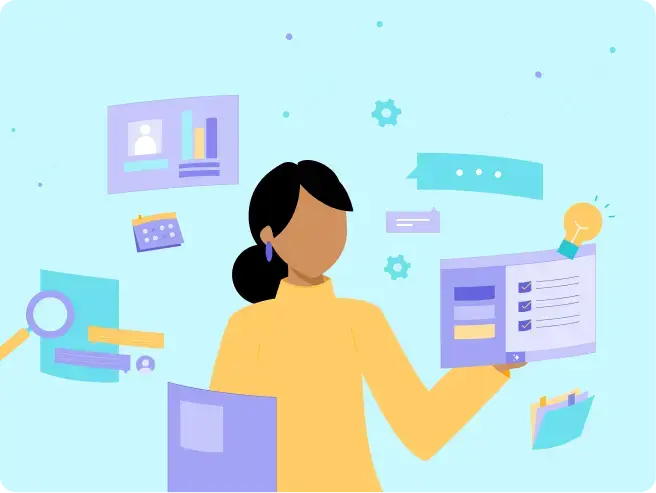Whether you’re a new teacher or an experienced teacher assigned to a new grade, lesson planning is quite challenging. You wonder where to begin, which tools to use, which teaching methods are age-appropriate, and so on, all to ensure that the students get the best learning experience!
You want to make the educational content anything but boring and ensure every session is engaging. If that’s your story, here are the top solutions to plan your lessons!
Start with a clear idea
The hardest part of planning lessons is the overall outline. So, take a step back and observe the bigger picture. In fact, research shows that thinking backward and understanding the entire curriculum offers you a better direction.
In simpler words, connect with the other teachers of the same grade. See how you can fit an idea within the overall curriculum. This will give you the outline of your lesson plan.
Next, break it down into shorter and simpler units. For every unit, consider the answers to these questions:
- What is your ultimate goal?
- What would you like your students to learn and/or be able to do by the unit’s end?
- How many weeks or months do you have for the entire lesson and each unit?
Interlink your goals with the lesson activities and timeframe.
Personalize lessons on the go according to students’ needs
Invest in school management software to track important metrics like their performance data, including strengths and weaknesses in your subjects. Identify struggling students or specific parts of the subject that most students can’t grasp.
Switch to different teaching methods or innovative resources to help students learn the concepts better. If some students can pick up concepts early on, you can also suggest advanced material to help their growth.
You can also share the additional resources and materials on the school management software. Students can access the necessary documents as required.
This way, you’ll be able to personalize your lesson plans according to different students’ needs at once.
Further, you can also stay connected with parents to boost parental involvement and enhance student accountability.
Consider different learning styles
Every student doesn’t have the same learning style. For instance, some students prefer hands-on activities to understand concepts, while others grasp concepts with visual elements, such as diagrams and videos. So, plan your lessons so that all students can stay engaged despite the differences.
You must incorporate discussions, visuals, and hands-on learning approaches all together. This way, you’ll offer them a range of ways to learn the concept. Students will learn faster when you cater to their learning styles.
Further, observe how each student responds to your techniques. If students still fail to grasp the concept, you must think out of the box. This includes additional resources or real-life application/comparison.
Make the best use of existing materials
Lesson planning from scratch is difficult and time-consuming. However, there’s no need to start everything from square one, especially if the previous lesson plan was effective.
So, check out the existing teaching materials for previous sessions. If you taught this specific grade in the past, refer to your own materials. If someone else was in charge, seek them for their resources and recommendation. Further, check what resources the school has used until now for this grade.
Gather all the materials and upgrade them based on any change in the curriculum.
Overcome the traditional teaching patterns
Traditional lesson plans are always confined to the classroom walls. However, it’s time to spark interest among students with a non-traditional approach. So, go out of the classroom to change their perspective.
For instance, if they’re learning about photosynthesis, go to the school garden. If they are learning history, take them to an excursion to a relevant historical site.
If going outside the school is not possible, plan some interesting activities that urge them to think deeply. Make them connect the subject to real life. For instance, teach them basic mathematics by playing shopkeeper and customer. Teach them how these concepts are used in daily life.
Build something interactive
Your lesson plan must also be quite interactive. So, after every teaching session, conduct a discussion plan.
Hold quizzes and let them compete to answer. Let one student ask questions and another answer. Interaction in the form of games will boost their understanding of concepts. They’ll also help improve each other’s knowledge.
Conclusion
After every lesson, reflect on how the session was and whether you need to make further improvements. Remember, continuous improvement leads to success!




